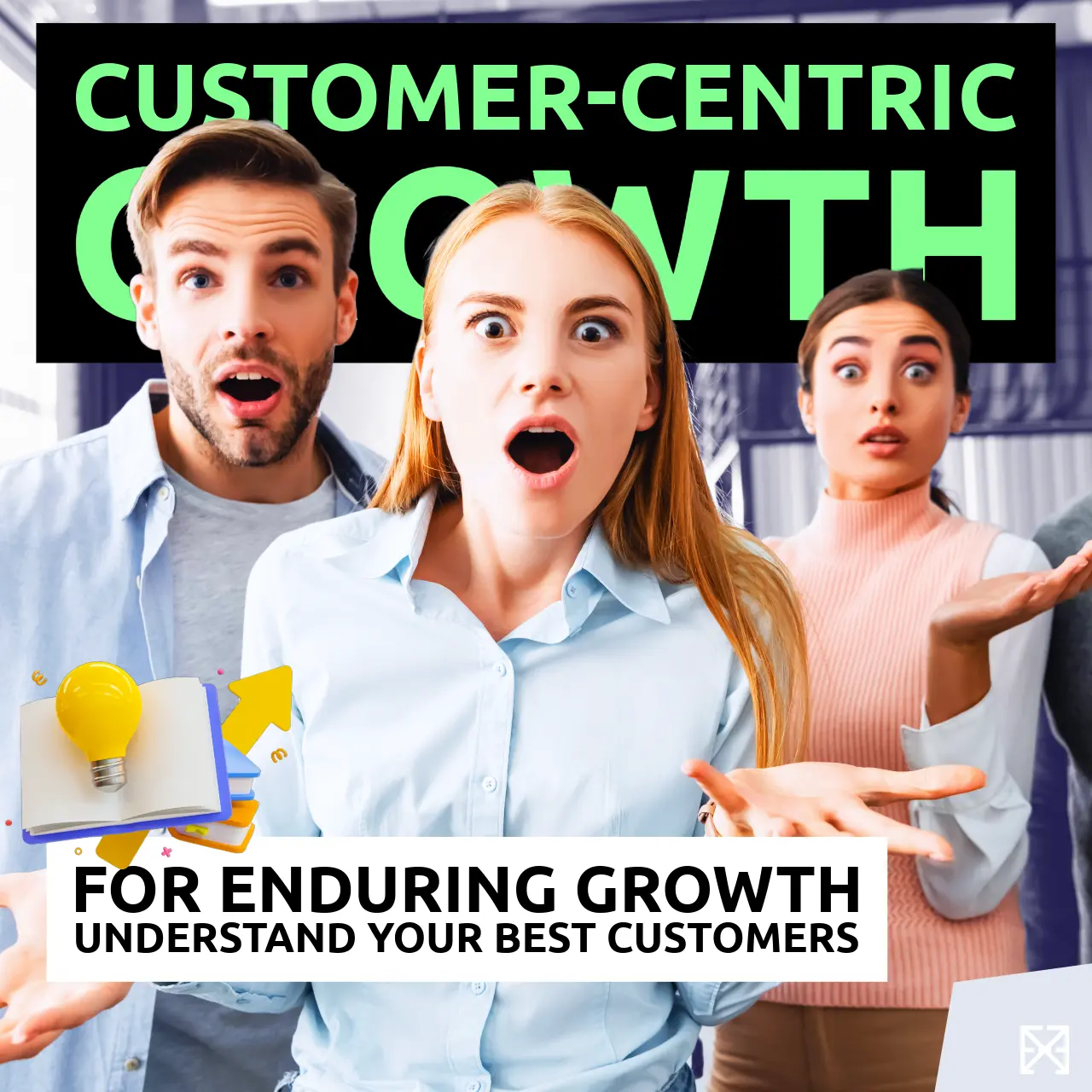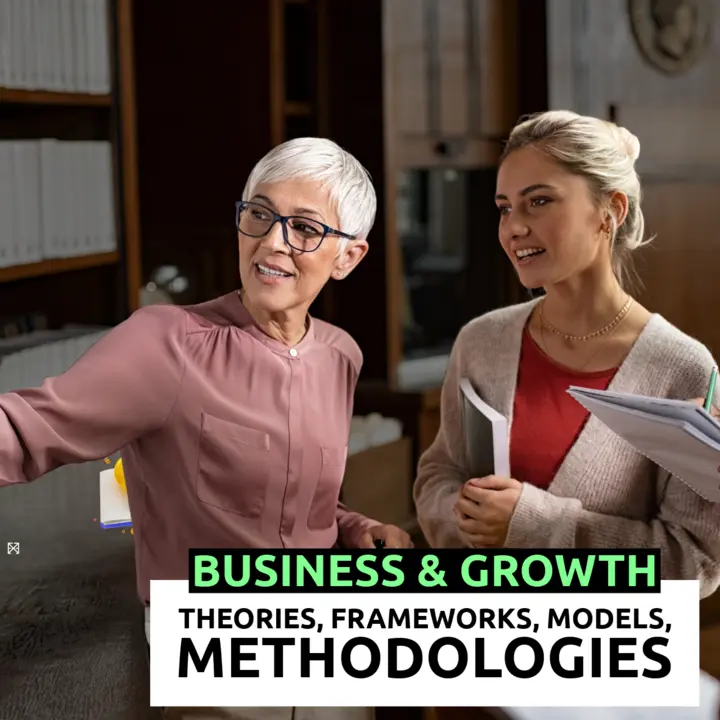A quick intro to VUCA covering analysis, strategic integration, ROI, startups, and leadership aspects of the VUCA framework and the insights necessary for you to lead in complex and dynamic environments.
VUCA stands for Volatility, Uncertainty, Complexity, and Ambiguity.
Originally coined by the U.S. military to describe the more multifaceted and unpredictable post-Cold War environment, the term has since been adopted by business leaders to encapsulate the challenges of operating in an ever-changing global landscape.
An environment characterized by rapid technological change, economic interdependence, and geopolitical shifts, VUCA serves as a framework that aids you and other leaders in conceptualizing the challenges they face and devises strategic responses. Understanding VUCA is essential for navigating the complexities of modern markets, driving innovation, and sustaining competitive advantage amidst constant disruption.
The 4 VUCA Components
Each element of VUCA highlights a specific type of challenge that can impact how organizations operate and make decisions.
1. Volatility: Speed and Breadth of Change
The Volatile dimension of VUCA refers to the nature and dynamics of change.
Volatility refers to the rate, amount, and unpredictability of change that can drastically impact industries and markets. Examples include fluctuating market prices, economic crises, or political instability.
Therefore, Volatility emphasizes the speed and breadth of change your organizations face.
In practical terms, this means that the conditions under which decisions are made can change rapidly and unpredictably, thus affecting the strategies and operations of your businesses.
Effective strategies to manage volatility include maintaining robust cash reserves, establishing flexible supply chain arrangements, and organizing rapid response teams to react swiftly to unforeseen changes.
2. Uncertainty: Modus Operandi of Missions
Uncertainty arises when the future is unpredictable, and events are beyond one's control. This could stem from regulatory changes or emerging competitors.
Uncertainty as “lack of predictability in issues and events” is inherent to businesses and operations and missions.
The difficulty arises in the compound effects when it's not just that things are changing rapidly (volatility dimension), but also that the outcomes of these changes are difficult to forecast.
This requires businesses to be adaptable, to continuously make decisions and adapt their decisions the next instance they have gathered and analyzed new data, maybe even rendering yesterday’s decisions null.
Key strategies to combat uncertainty include being prepared for multiple scenarios, conducting regular scenario planning, establishing robust contingency plans, and maintaining agile market research practices to stay ahead of industry trends.
Empowering decision-making at all levels seems to be the best strategy to thrive in uncertainty. Empowerment allows those closest to the issues to respond swiftly and effectively, enhancing the organization's overall responsiveness.
3. Complexity: Interconnectedness of Systems and Forces
Complexity pertains to the multiplicity of forces, the confusion between cause and effect, and the chaos that surrounds an organization.
This complexity often comes from the interconnectedness of systems and forces, making it challenging to understand the full range of potential impacts from any one action.
Complex challenges involve a multitude of interconnected factors which might include global supply chains or intricate regulatory environments. To manage complexity, organizations should strive to simplify operations like the leadership hierarchy, improve internal and external communications and decision-making powers.
4. Ambiguity: Clarity and Information
Ambiguity refers to the lack of clarity about the meaning of an event or situation.
It often arises when there is unclear or incomplete, contradictory, or poorly interpreted information, making it difficult to predict impacts accurately. Examples include entering new markets or launching novel products.
Strategies to address the inability to see the connections between actions and outcomes include fostering a corporate culture that values experimentation and learning, utilizing pilots and prototypes to test new concepts, and implementing iterative approaches to product and process development.
Strategic Flexibility: VUCA in Strategic Planning
To thrive in a VUCA world, organizations must develop strategic flexibility. This involves creating adaptable business strategies that can quickly pivot in response to new information or unexpected changes. Emphasizing flexibility in strategic planning allows companies to respond to opportunities and threats more dynamically.
VUCA can effectively complement other strategic frameworks such as SWOT, Porter’s Five Forces, or Blue Ocean Strategy. Integrating VUCA with these models can provide you a more holistic view of both the internal and external business environments, facilitating more informed and adaptable strategic decisions.
To contextualize VUCA fully within organizational strategy and to pinpoint where it adds the most value, let's consider broader strategic frameworks and specific actionable insights. We'll also focus on the return on investment (ROI) from leveraging the VUCA concept, both for established businesses and startups, especially through the lens of customer-centric long-term growth.
Contextual Integration with Strategic Frameworks
VUCA can be integrated into larger business strategies by aligning it with other strategic frameworks like SWOT (Strengths, Weaknesses, Opportunities, Threats), Porter’s Five Forces, or the Blue Ocean Strategy. For instance, understanding the 'volatile' and 'uncertain' elements can enhance the 'Threats' and 'Opportunities' assessment in SWOT analysis, providing a dynamic view of the competitive landscape and internal capabilities.
By incorporating VUCA into strategic planning, organizations can develop more dynamic strategies that are capable of adapting to sudden market changes. This includes flexible business models that can pivot quickly in response to new information, ensuring resilience and continued relevance.
Applying VUCA helps improve the anticipation and mitigation of risks by encouraging a more nuanced analysis of potential threats and their interconnections. This can reduce costly mistakes and enhance the company's ability to respond to crises.
Understanding the complex and ambiguous information landscape can help organizations better anticipate customer needs and innovate their approach to customer engagement. This is crucial in volatile markets where consumer preferences shift rapidly.
ROI Aspects of VUCA
By reducing uncertainty and ambiguity through improved data analytics and scenario planning, organizations can make better-informed decisions. This directly enhances ROI by minimizing risk and optimizing resource allocation.
In complex and ambiguous environments, organizations that can innovate effectively are more likely to discover untapped markets and create value propositions that distinguish them from competitors. Innovation drives growth and can significantly impact the bottom line by opening new revenue streams.
For established organizations and startups alike, focusing on customer-centric growth involves recognizing and reacting to customer needs more swiftly and effectively.
If you think about implementing VUCA Strategies invest in data analytics (quant and qual!) to gather and analyze customer data. Data-driven customer insights helps in understanding volatile consumer behaviors and uncertain market trends, allowing for timely adjustments in product offerings or marketing strategies.
Implementing agile methodologies in project management and product development can significantly enhance an organization’s ability to adapt to change and manage complexity. This yields quick returns by reducing time to market and enhancing customer satisfaction.
Strategic partnerships are important in a VUCA world as they can provide a buffer and extend capabilities quickly without the overheads associated with organic growth. Form alliances with other companies to share risks and resources in uncertain and complex environments.
Startups are a temporary organization in the search for market fitness
For startup organizations specifically,
- Embrace a lean startup approach (Lean Startup Methodology). Build many minimum viable products (MVP), get feedback from early adopters, and iterate quickly. This approach minimizes the cost of failure and maximizes flexibility in volatile market conditions.
- Focus intensely on customer development alongside product development (Customer Development). This means continually testing the market with new features based on user feedback, which is crucial in ambiguous and complex environments.
By embedding some of these practices into your strategic thinking and operational framework, you can harness the full potential of the VUCA concept to drive customer-centric long-term growth and achieve significant ROI. For startups, these strategies not only maximize initial capital efficiency but also set the foundation for scalable, resilient growth.
Combatting Uncertainty: Decentralization and Empowerment
Decentralization and empowerment are of utmost importance in combatting uncertainty, as well as planning: You cannot loose lives on the battlefield (and cannot bring it home either!)
Decentralization and empowerment enhance organizational agility by enabling faster responses to changing conditions.
Empowering Decision-Making at All Levels allows those closest to the issues to respond swiftly and effectively, enhancing the organization's overall responsiveness. Drawing from military practices, where commanders set objectives but leave tactical decisions to field officers, businesses can empower employees to make decisions at the local level.
Scenario Planning practice not only prepares organizations for different outcomes but also helps in visualizing the impact of potential changes in the environment. Regularly developing and updating multiple scenarios helps anticipate various futures and prepare responses accordingly.
Readiness is crucial for maintaining operations during sudden market shifts or crises. Establishing detailed contingency plans for a range of possible scenarios (robust contingency planning) ensures that the organization can quickly pivot and implement alternative strategies as required.
Agile Market Research helps in making informed strategic decisions that align with current market realities. Maintaining agile practices in market research allows companies to stay current with trends and consumer behaviors, adapting to new information as it becomes available.
You cannot manage uncertainty; you can only lead it.
And to lead it you need empowered people to lead—otherwise you are managing.
So you most critical role as a leader is empowering lower levels of the organization to ensure a rapid and flexible response to unforeseen challenges.
By integrating these strategies, you can better lead in uncertainties of your operating environments, making you more resilient and capable of thriving in a VUCA world.
Leadership in a VUCA World
Navigating a VUCA world requires leaders who possess agility, foresight, decisiveness, and resilience. These qualities help you make informed decisions swiftly, anticipate future challenges, and guide your organizations through periods of change and uncertainty.
Cultivate a corporate culture that embraces VUCA principles. This culture must value adaptability, forward-thinking, and continuous learning.
Encourage an environment where innovation is rewarded and where employees are supported in developing new solutions.
Develop a VUCA-ready culture for sustaining long-term success in a VUCA world












